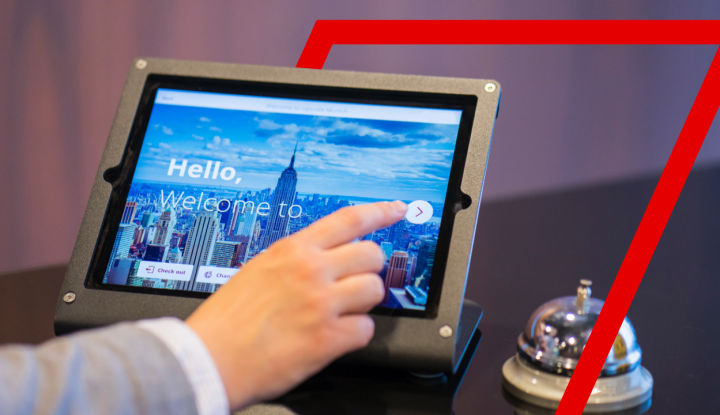1. Assess knowledge gaps
For airlines, every trip the customer takes essentially belongs to a “new” individual, because assembly and analysis of extensive customer profiles have yet to be deployed at scale. Airlines bridge these gaps by introducing loyalty programs to attract and retain travelers. This provides them the opportunity to learn about their frequent flyers, and to design strategies targeting that segment. Nonetheless, there is a large segment of the flying public that does not belong to a loyalty program. That means carriers are missing the opportunity to know those travelers and satisfy their needs. Major airlines may have up to 80 percent of passengers outside of a branded loyalty program, which leaves plenty of room for more detailed knowledge. The expansive growth of customers’ data in an airline varies from internal and external channels, and forces the carrier to accumulate vast amounts of that information. Much of this information stays siloed to the department that created it — ground operations data sticks within one system while in-flight catering data stays within another. Data expansion inflates the data silo effect, and it becomes difficult for airlines to track their customers across many channels and integrate those customers’ data from multiple sources. Each customer leaves a digital footprint through each channel via various interactions, transactions and browsing histories. Hamid Herzai, Principal Product Manager for Sabre Airline Solutions, identifies five questions all airlines must answer when pursuing a single view of their customers:- Who are my customers?
- What actions have they taken in the past?
- What are their preferences, likes and dislikes?
- What can the airline expect from them in the future?
- How does the carrier approach them, and influence their decisions?
2. Understand traveler expectations
The next consideration is that traveler expectations have changed dramatically since the introduction of the smartphone. Travelers don’t really care how hard it is for the airlines to build one aggregate data view. They simply want the best experience possible, targeted to the information that they’ve already shared. There are many new opportunities to learn about customers in this new mobile-first world, Herzai says:The increase of digital content and technology has enabled companies in various industries to analyze customer data and implement means to learn about every single individual’s experience and behaviors. This information, in turn, has enabled those companies to target and personalize to each individual, guiding and advising that person, thus providing a better end-to-end customer journey.And even if those experiences are outside of travel, passengers still compare their experiences. Experiences are industry-agnostic. Passengers expect the same or better levels of service and overall experience from other companies with which they interact, regardless of industry. Benchmarking is now not across the aviation industry, but across all industries.
3. Move from reactive to proactive
Traditionally, airlines have focused on delivering individual products and services, not always taking into consideration individual preferences of each passenger. This reactive approach in relation to the customer’s end-to-end journey has left a compelling opportunity open for a proactive approach for the data-fueled airline. Flight scheduling, capacity planning, fare management, ancillary selection and prices are driven first by airline priorities in managing the business. Lack of understanding related to customer behavior forces a “one size fits all” approach. The airline then completely misses the revenue opportunity from targeting travelers with personalized offerings, product bundles and applicable discounts — each at the right time and through the right channel, thus dramatically improving the likelihood of conversion. A reactive strategy locks airlines into a defensive posture throughout the traveler’s journey. This position adversely affects customer loyalty by frustrating the traveler. It also lead to a less efficient airline, as operations lurches from disruption to disruption without direction, planning or a clear understanding of the system-wide implications of certain decisions.4. Build a data hub
Big Data has moved beyond being a buzzword. Data has now infused itself into every department in almost every enterprise. Airline executives understand the urgency to harness the data contrails and be more customer-centric. A data hub facilitates best-in-class traveler experiences at every stage of the customer journey, thus enhancing loyalty, increasing profitability and improving satisfaction. A hub accomplishes this by sitting above all operations, from ticketing to ground to maintenance, and filtering all disparate streams into one primary data aggregator. From there, a single view of the customer can be compiled more easily. Analytics can be rigorously applied to infuse true customer-centricity throughout, as Herzai emphasizes:It’s this “single source of the truth” that emerges as data is integrated from multiple touchpoints: structured reservations, check-in and ticketing, shopping analytics, buying patterns, search behavior, social media… Each are critical elements of the master customer profile for each individual traveler.The hub empowers an airline to identify qualified customers throughout their journey, from planning to post-trip, and to collect and process information in real time with each interaction. It enables an airline to proactively address, adjust and adopt an individual approach to every person at the right time with the right offering through the right channel. For personalized customer service, scoring and segmentation based on the customer’s previous interactions becomes a reality. By building the right facilities for long-term retention of passengers, airlines enjoy brand differentiation through personalization across all points of sales and service, and that personalization is the key factor in providing offerings customized for the individual in any situation throughout the individual’s own journey. This is a not a data revolution — that’s already happened. Data has created many different views of the truth, which in some ways has challenged the very notion of hospitality. This next phase is about refining data to empower customer-centricity. By placing the traveler’s wants and needs first, airlines better serve that customer at every step of every future journey. It’s a return to hospitality that will drive loyalty far into the future.
This article was adapted from Hamid Herzai’s article “Customer Centricity on the Rise” in Ascendmagazine.








